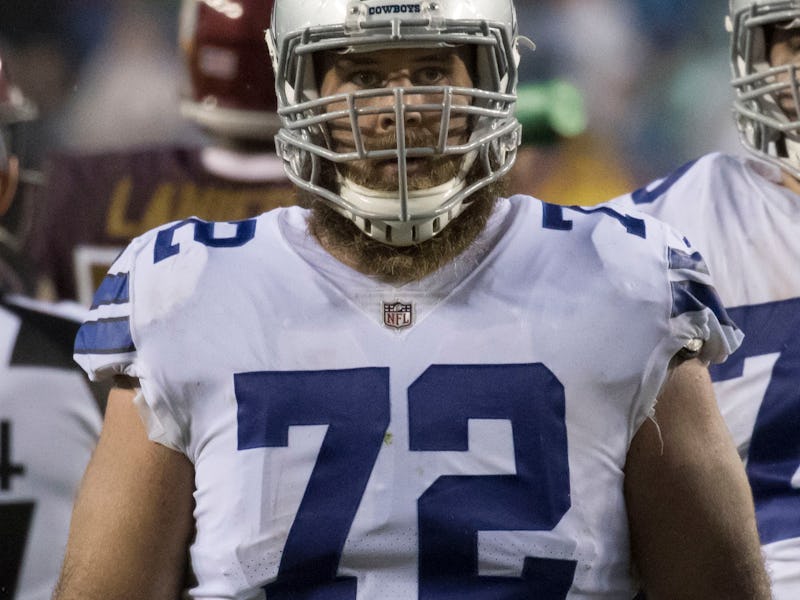Earlier in August, the training-camp absence of the Dallas Cowboys’ Travis Frederick, one of the best linemen in the NFL, was being blamed on “stingers.” These pinched nerves in the neck and shoulder, common in contact sports, cause hot, stinging pain down the arm toward the fingers. Stingers are usually temporary. On Thursday, however, a statement from Frederick revealed a far more devastating diagnosis: he has Guillain-Barré Syndrome, an autoimmune disease that will keep him off the field for an indeterminate period of time.
Guillain-Barré Syndrome (GBS; pronounced “gee-ya bah-ray”), which, like stingers, causes tingling, weakness, and pain in the extremities, occurs when the body’s immune system attacks its own nerve cells. If serious cases are left untreated, it can lead to temporary paralysis. There are three different types of GBS, but the most common in the United States is called acute inflammatory demyelinating polyradiculoneuropathy (AIDP). In this type of GBS, the immune system damages the protective “insulation” around nerves called myelin. Like the plastic casing around an ethernet cable, myelin ensures signals can pass through nerves efficiently and securely. When it’s compromised, so are signals from the brain, which tell the extremities how to move. When those signals can no longer be transmitted, temporary paralysis can ensue.
But perhaps the most worrying part about GBS is that we still don’t know that much about it. Doctors aren’t even sure what causes it.
What Is Guillain-Barré Syndrome?
GBS — which the CDC characterizes as a rare disease — has been known to appear after respiratory or digestive tract infections or even after recent surgery or, controversially, after immunization with the flu vaccine. More recently, it’s been linked to infection with the Zika virus. It appears that its onset has to do with stimulating the immune system, but its exact mechanisms remain unknown.
How Is Guillain-Barré Syndrome Treated?
There’s no cure for GBS, but doctors at least know how to treat the symptoms and prevent the illness from getting worse. The first form of treatment involves a process called plasmapheresis, in which blood plasma (the clear, yellowish liquid in which blood cells float) from the infected patient is removed in hopes that the existing blood cells will make new plasma. The idea is that there are elements of infected plasma that might enable the immune system’s attack on the nerves, so removing the old and replacing it with fresh plasma could reduce the response.
The other type of treatment is known as immunoglobulin therapy, in which healthy antibodies (immunoglobulins) from a donor are administered to a patient, in hopes that the donor antibodies will block the nerve-damaging ones being deployed by the body’s immune system.
Will Travis Frederick Recover?
It can take months or years to recover from GBS, but recovery is possible. Frederick can take solace in statistics, reported by the Mayo Clinic, that 80 percent of patients can walk independently six months after they’re diagnosed and that about 60 percent fully recover their motor strength after that time.
In an interview with Sports Daily on Thursday, Baylor Medical Center neurologist Dr. Spencer Miller, who is not involved with Frederick’s treatment, said the linebacker’s recovery would take at least a few months but cautioned he should be careful not to push himself before recovery is complete.
“It would slow down his recovery if he was hastened back into the game,” he said. “It could slow down his recovery or hasten reoccurrence if he overdrives his body early in the recovery period.”
